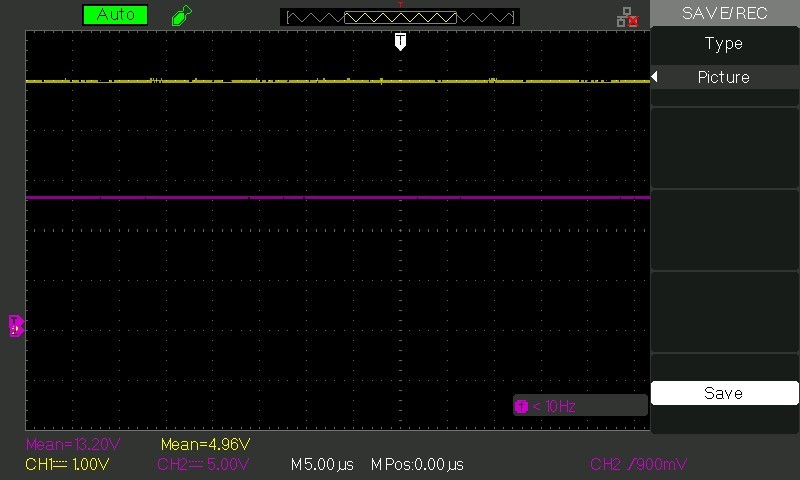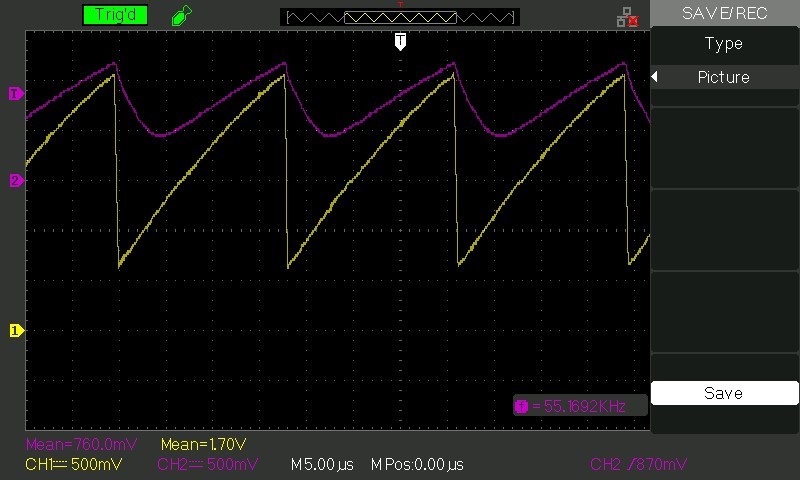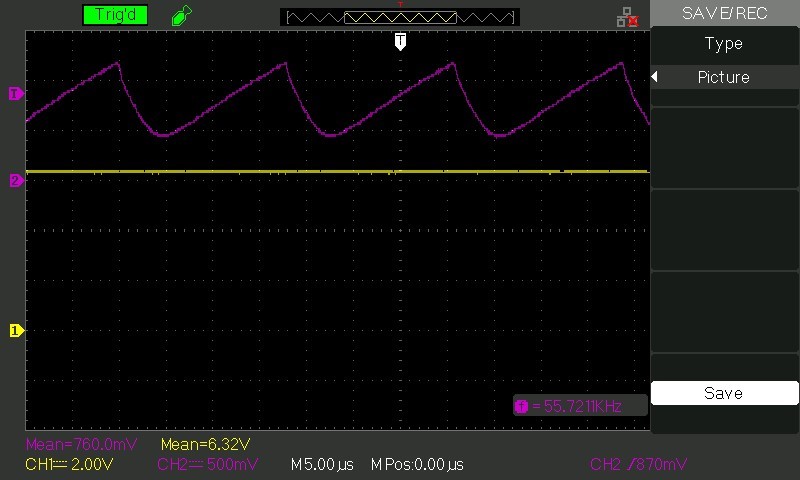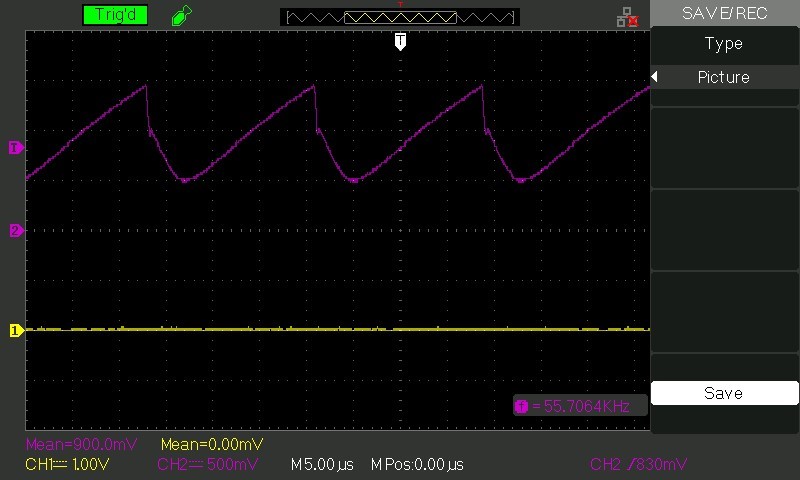Other Parts Discussed in Thread: UC2843
Dear TI Support team,
We are using UCC28C43 in a flyback design. The FB pin is connected to 0V and the COMP pin is controlled by opto-isolated feedback.
The design is for 200V DC input and 56V DC output.
To begin with, I have started testing at lower input DC voltages to check functionality. I am testing with about 70V DC input by reducing the start up resistor to 10k Ohm.
The VCC pin rises above UVLO turn ON threshold at about 40V input and we get VREF output of 5V. At 70V DC, the VCC is about 13V. Saw tooth waveform is generated at RT/CT pins. Part of the saw tooth waveform is added to ISENSE pin through a transistor (similar to that shown in Fig. 27 of the datasheet). The peak ISENSE pin voltage is about 0.6V. Currently there is no opto-isolated feedback (as it will get activated when the output gets close to 56V). COMP pin is at around 6.3V.
Under these conditions, there is no PWM output. The voltage at ISENSE pin is solely the result of the saw tooth waveform added there.
As per my understanding, if the COMP pin is at 6.3V and ISENSE pin peak voltage is 0.6V, I should get close to 100% PWM duty cycle. But actually the output continuously LOW.
I tested with the above arrangement on 3 boards, with the same result.
With regards,
Vijay Limaye
Request your support for resolution of the problem.





